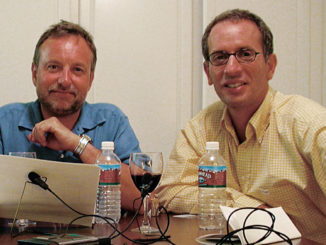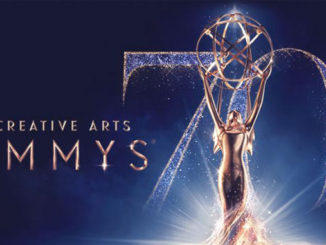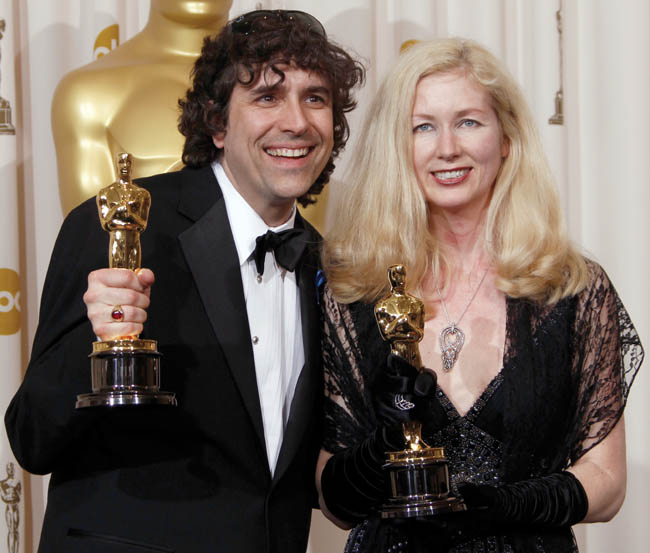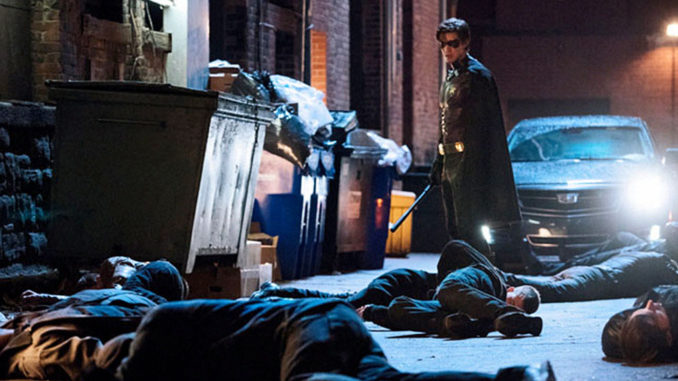
by Mel Lambert
Taking a cue from Netflix, Amazon and other media providers, DC Entertainment and Warner Bros. Digital Networks last year unveiled DC Universe, a video-on-demand service that will include original TV programming, access to select animated series and films from an extensive back catalog. Upcoming releases include Titans, an 11-episode series based on key characters from DC Comics that was posted at Warner Bros. Studio Facilities.
The series began streaming Friday, October 12 at $7.99 per month. Developed by executive producers Greg Berlanti, Geoff Johns, Akiva Goldsman, Sarah Schechter, Greg Walker and John Fawcett, Titans features Brenton Thwaites as Robin/Dick Grayson (Batman’s former sidekick), alongside Anna Diop, Teagan Croft and Ryan Potter as Starfire, Raven and Beast Boy, respectively.
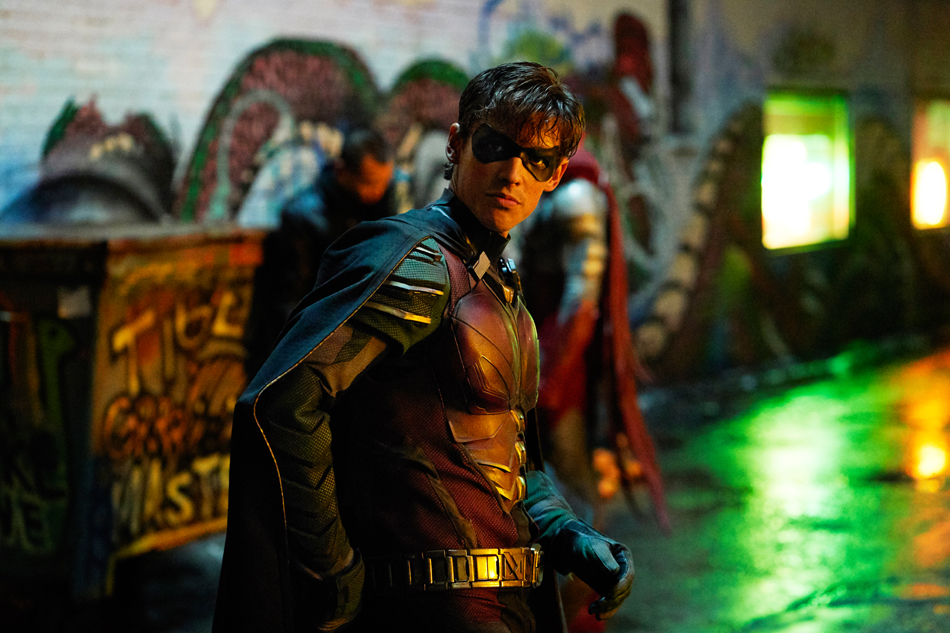
Supervising sound editor Norval “Charlie” D. Crutcher III, MPSE, recalls being approached by series producer Tom Flores earlier this year. “We had a good relationship from my work on The Shannara Chronicles and Smallville; the new super-hero series sounded exciting,” he says. Other members of the post crew include co-supervisor Vince Tennant, MPSE, handling dialogue/ADR and vocal design, Peter Lago, MPSE, overseeing sound design and sound effects editorial, dialogue/music re-recording mixer Dan Hiland, CAS, and sound effects mixer Todd Beckett, CAS, working on Dub Stage 1 at Warner Studios’ Burbank facility. “I also continue to work with Peter and Vince on The 100,” adds Crutcher. “We start the sixth season [of the CW channel series] in November.”
Production delays meant that sound editorial for Titans did not begin until June of this year, instead of March, as was originally planned. “With a five-day turnaround, it’s a tight schedule,” the sound editor admits. “The schedule might be stretched to seven or even 10 days if we have late ADR or visual effects elements. In terms of an overall sound style, Greg Walker told us during early meetings that they didn’t want us to do the usual sound jobs as done on other superhero shows for network TV. The showrunners wanted a real-world ambience that placed the actors into a believable landscape. ‘Tell the story where we are,’ they stressed. ‘Only use the temp as a guide and expand on it,’ giving us no boundaries.” Sound assistants on Titans included Deron Street, Damon Cahoon and Kim Morrell.
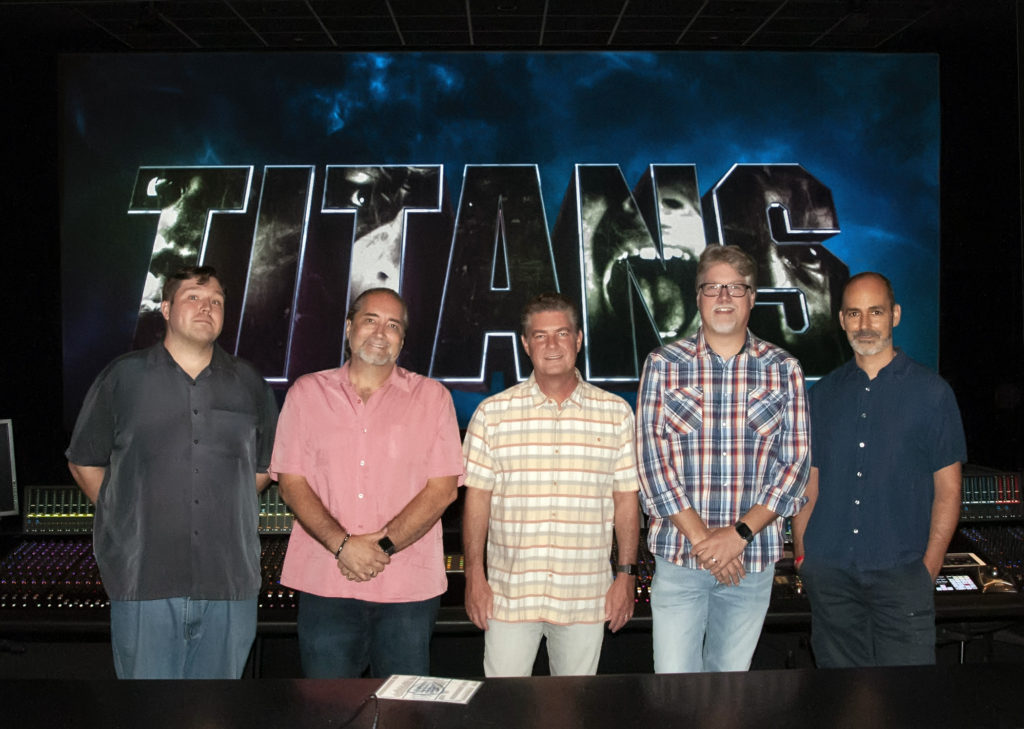
“We came aboard in July, with a schedule that specified a two-day mix delivery plus one day for producer playback, notes and fixes,” adds dialogue/music mixer Hiland. “That’s pretty tight for an hour-long action series with complex sound and vocal design, and a slew of sound effects. The show gets really aggressive with sound design that dramatically underscores the powers of the lead characters. We also met with Tom Flores to determine the overall style for our 5.1-channel soundtrack. The showrunners wanted us to keep the show grounded in reality — and ‘gritty’ sounding — with backgrounds and city sounds. I had also worked on several of Greg’s pilots and series, including Everwood, Arrow and Supergirl. He wanted us to underscore that real-world realism.”
As Crutcher recalls. “At noon on the first day of the mix, Greg Berlanti told us that he loved the way we had crafted the soundtrack, which we cut and mixed like a feature film, and told us to push the envelope even more. When we played back the final mix of Episode 1, he had zero notes, which is unheard of! ‘You have it dialed in,’ he told us. We were jazzed by that reaction so early in the post-production process, and excited that Titans was not going to be a run-of-the mill production.
“Vince is the king of dialogue plug-ins, while Peter is a sharpshooter with Pro Tools and doesn’t miss anything,” Crutcher adds. “Because we had no stage time for pre-dubs, the editorial team prepared pre-panned stereo and LCR stems — plus 5.1-channel, if appropriate — for Dan and Todd, having secured their feedback.”
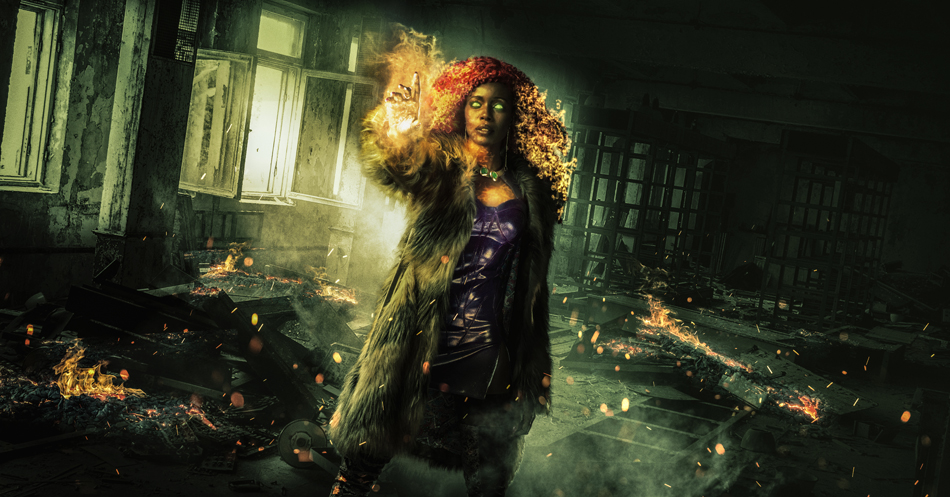
“The show’s production mix team delivered good dialogue tracks,” offers Tennant, who worked closely with dialogue editor C.J. Carpenter. “Because of the shooting schedules on modern scripted series, we don’t always get as much coverage as I might like. But overall, ADR decisions on Titans were based on creative and not technical reasons. We had some nice sounding boom as well as traditional lavalier tracks, which worked well even with the complex costumes used for the Titans cast.” In terms of plug-ins, “The wonder that is iZotope saved many tracks,” the dialogue supervisor says. “The spectral editing offered in iZotope has rescued audio that might previously have been considered a lost cause.”
Tennant stresses that he took his vocal design for Titans “further than on previous shows.” The character of Raven/Rachel Roth, in particular, offered its own challenge. As we discover, Raven is an empath with a dual personality that speaks through her, often via a mirror. “We originally had the actor [Croft] voice those alter-ego] lines, but we weren’t getting the duality the showrunners were after,” the supervisor explains. “So we used a different female voice actor, layered the track with Teagan’s original performances and processed it with plug-ins before adding a male voice that had been dropped several octaves to give a low-end presence. We needed to emphasize the dramatic differences between the character’s two manifestations, yet retain the original voicings for the dub.” ADR was recorded by Eric Gotthelf, Jason Oliver, Tami Treadwell and Carolyn Tap.
According to Tennant, during early spotting sessions Walker “explained that they wanted to incorporate three different but interlinked genres for Titans. They were looking for a noir feel for the lead character, Robin, a full-on horror feel for Raven, and a mystical/sci-fi feel for Starfire. For the noir sequences, we were more conventional with our vocal and sound designs, whereas for the other genres we had a bigger palette of options.”
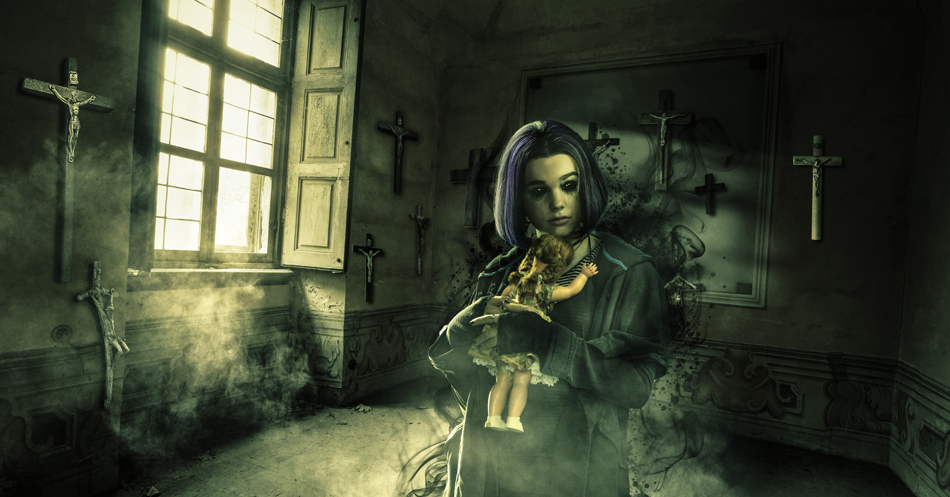
In addition to extensive Foley tracks recorded by John Sanacore, MPSE, CAS, and cut by editor Clay Webster, MPSE, sound effects editor Lago used sound design “as a tasty means to immerse the viewers in the story. This show provided plenty of opportunity to blend ‘real life’ with comic book hyper-reality and create everything from cool gadgetry, vehicles, weapons and hero suits, to moody asylums and Gothic mansions. We created unique sonic realms for our characters to play in. I love telling stories with sound; I like to challenge myself one frame at a time.” Foley artists were Alyson Moore and Chris Moriana.
Lago utilized a combination of sound effects libraries and custom recordings. “I start with Warner Bros.’ sound library, as well as a number of libraries I’ve purchased and custom material I’ve created,” he explains. “After closely reading the show’s scripts, I will identify where my library is lacking and start the hunt for fresh material. For the Raven character, as an example, I turned to the new Monster Within library from SoundMorph as a starting point which, with Vince’s vocal design, offered some unique solutions. But I made a point of not using that SoundMorph library on any other character, so that it remained unique to Raven,” who can teleport and control her “soul-self,” as well as act as her eyes and ears away from her physical body.
With regard to overall sound effects and background choices, Lago says that “both Adam West’s and Michael Keaton’s versions of Batman struck a chord with me at an early age, and fueled my passion for gritty, hard-boiled detective stories, but also for storytelling through sound. On Titans, I was fortunate enough to work with three incredible sound designers on various episodes: Rickley Dumm, Robert Ramirez and Alexander Pugh, each of whom brought his unique strengths and flavor into the editorial process. Rickley helped me create the signature sounds for Hawk’s and Dove’s fighting movements, while Alex built enormous backgrounds and vehicles. Robert’s overall fight material was top-notch.
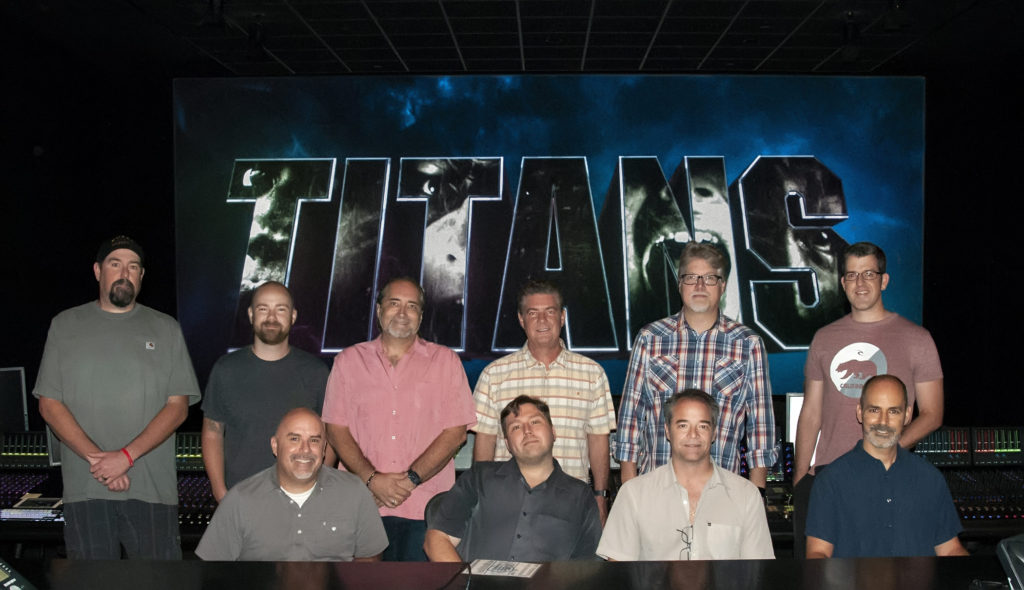
“My control surface of choice is an Avid Artist Mix, which is great for automation and panning while pre-dubbing material for the mix;,” he continues. “My plug-ins of choice for Titans included WAVES Guitar Stomp, WAVES SoundShifter Graphic, WAVES LoAir, iZotope Denoiser, WAVES MondoMod and WAVES L3 Ultramaximizer.”
Lago’s sound effects track layout for the stage comprised six effects pre-dubs, each consisting of six mono and six stereo elements, totaling 108 voices, plus four background pre-dubs, each consisting of eight mono and eight stereo elements, totaling 96 voices. “The layout was pretty fluid from episode to episode,” he says, “and, with each pre-dub being identical, we were able to move large chunks of design around with ease to fit the needs of the episode. It’s like playing Tetris.
“Normally, I try to keep Foley-esque type of elements in Group A, Technology (Robin and Wayne tech, computers, cell phones) in Group B, fights and punches in Group C, body falls in Group D and so on,” Lago continues. “In fight-heavy sequences, we can rethink our usual grouping and instead re-group elements based on character needs. Robin’s cape and fight maneuvers can go in Group A, for example, with his gadgetry — bo staff, custom ninja stars and grappling hook — spread across Groups B and C.”
Tennant supplied between 60 and 70 tracks of dialogue and ADR, including backup alternates, “plus maybe an extra 35, as required.”
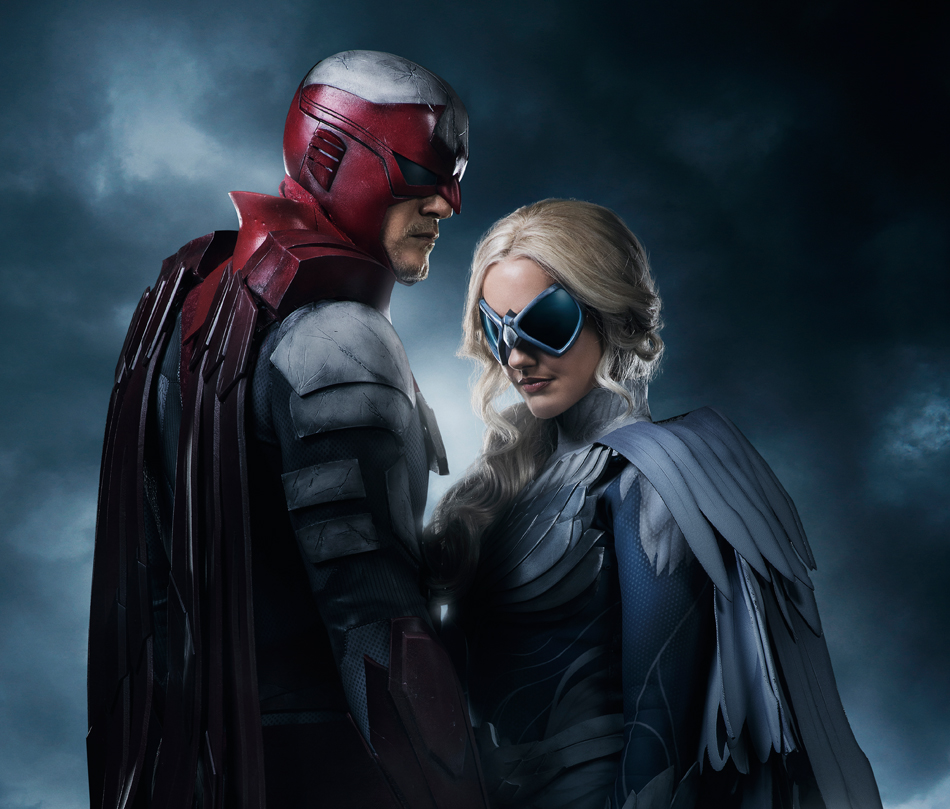
“Thankfully, we can accommodate high track counts here on Dub Stage 1,” Hiland confides, “courtesy of this Avid S6 M40 Control Surface with 40 on-surface faders,” plus MTM, joystick and post module. The S6 mix systems comprise HDX3 engines running current-generation Pro Tools. Additional systems are available as part of the stage for editorial support and music review. The master recorder is an HDX3 engine running Pro Tools with MADI routing system to provide flexible configuration for a number of recording formats.
“Sound editorial sent us a lot of pre-dubs with level and panning baked in, but which we can modify in the Pro Tools sessions, if necessary,” the dialogue/music mixer continues. “Mixing ‘in the box’ up to print mastering offers us a lot of creative freedom. Like all network shows, we have to hit a -24 dB LKFS loudness specification [to EBU R128] — even for steaming media — but we asked for some flexibility, given the high amount of dialogue processing we were using on character voices. We are okay with -20 LKFS, although we try to hit -22 if we can.”
Music from composer Kevin Kiner arrived as a series of stereo stems comprising synthesizer, guitar and other elements,” says Hiland. “It is a very electric score with a lot of separation so that we have creative options during the mix. Frequency spikes, for example, can mask a key dialogue line.”
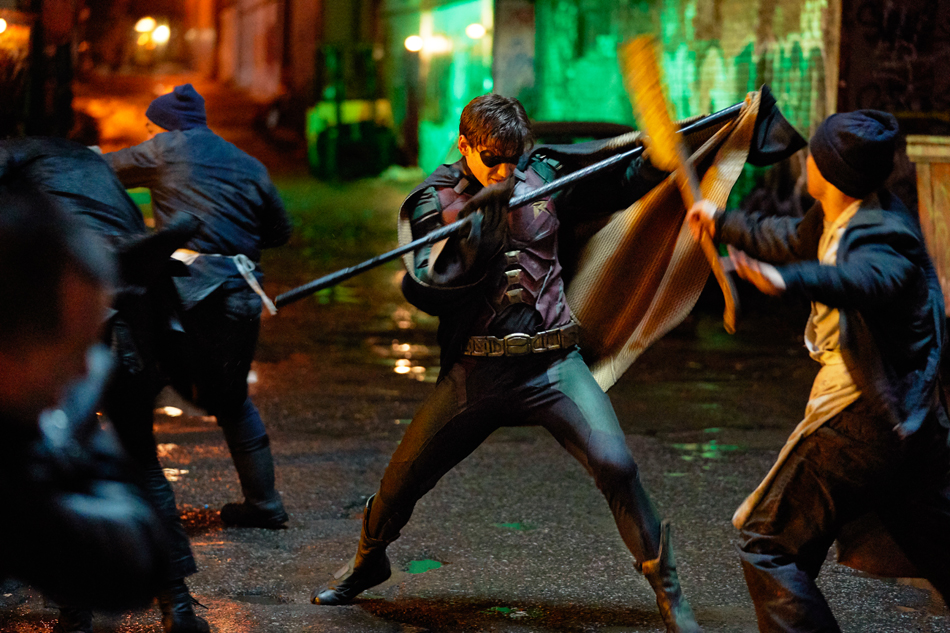
Sound effects mixer Beckett worked previously on a variety of TV shows while at Sony Pictures Studios, including Barry, Sneaky Pete and Electric Dreams. “But I soon came up to speed because this is a show that doesn’t take prisoners!” he explains. “I like to be organized. Working with Peter means that I received consistent templates for the various Pro Tools sessions. It was a highly collaborate process from day one.”
Hiland will have priority on the console at the start of a new mix session. “Unless the scene is particularly noisy or busy, I like to get a general shape with backgrounds and ambiences,” Beckett continues. “That way, Dan has something against which to place the dialogue and music as a first pass. Then it’s a back-and-forth process, as we build the soundtrack and flesh out the effects elements.” Hiland adds, “The showrunners let us know when we have gone too far.”
“The collaborative process from editorial through re-recording means that we can proceed heads-down and make each unique episode sound the way we want,” Beckett confides. “Knowing that everything we receive has been so well prepared each time means that we faced few surprises. Getting everything done in time is our biggest challenge. We often faced a lot of problems, like having to finish a busy four-minute fight sequence at the end of day one.” Hiland agrees, “Yes, we needed to get the soundtrack to a stage where we were happy, and then present the result to the producers.”
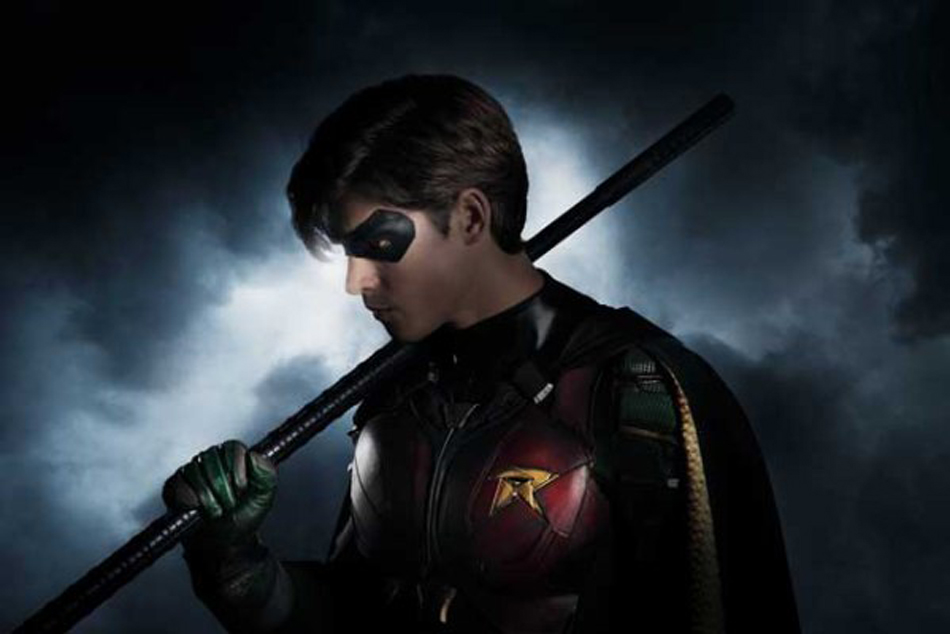
“I emphasized to the sound crew that we are telling a story,” Crutcher relates. “What is the environment? Where are we? Every scene and sound should have character and detail. This is not basic TV; we needed to add lots of details to sell the environment to the viewer.” Lago’s biggest challenge was keeping up with what had been happening on each episode. “As a stickler for detail, I often find myself diving too deeply in the minutia,” he says. “For example, I noticed a fly moving across one scene, which probably wasn’t supposed to be there. I couldn’t just ignore it though, so I built a whole ‘fly maneuver’ design as it zigs and zags between left, center and right. There was a lot of intricate visual detailing like that on Titans.”
“Dialogue is king,” declares Tennant, defending his vocal designs. “It may be ditch-digging on most shows but, for Titans, I fought for space to make dialogue design work for the scenes as played, including off-camera conversations we added in ADR and Group. I always remain open to new ideas.”
In May 2018, DC Entertainment announced a spin-off series, Doom Patrol, which will pick up after the events of Titans. The DC Universe streaming service will also offer Young Justice: Outsiders, the third season of a superhero series developed by Brandon Vietti and Greg Weisman, with animated characters that act as a young counterpart to the Justice League. The first of 26 episodes of Young Justice: Outsiders are scheduled to air in early 2019.
Other planned series include Swamp Thing and the animated Harley Quinn. However, the five DC television adaptations that currently air on the CW (Arrow, The Flash, Supergirl, Black Lightning and DC’s Legends of Tomorrow) will not be a part of the DC Universe streaming service.



